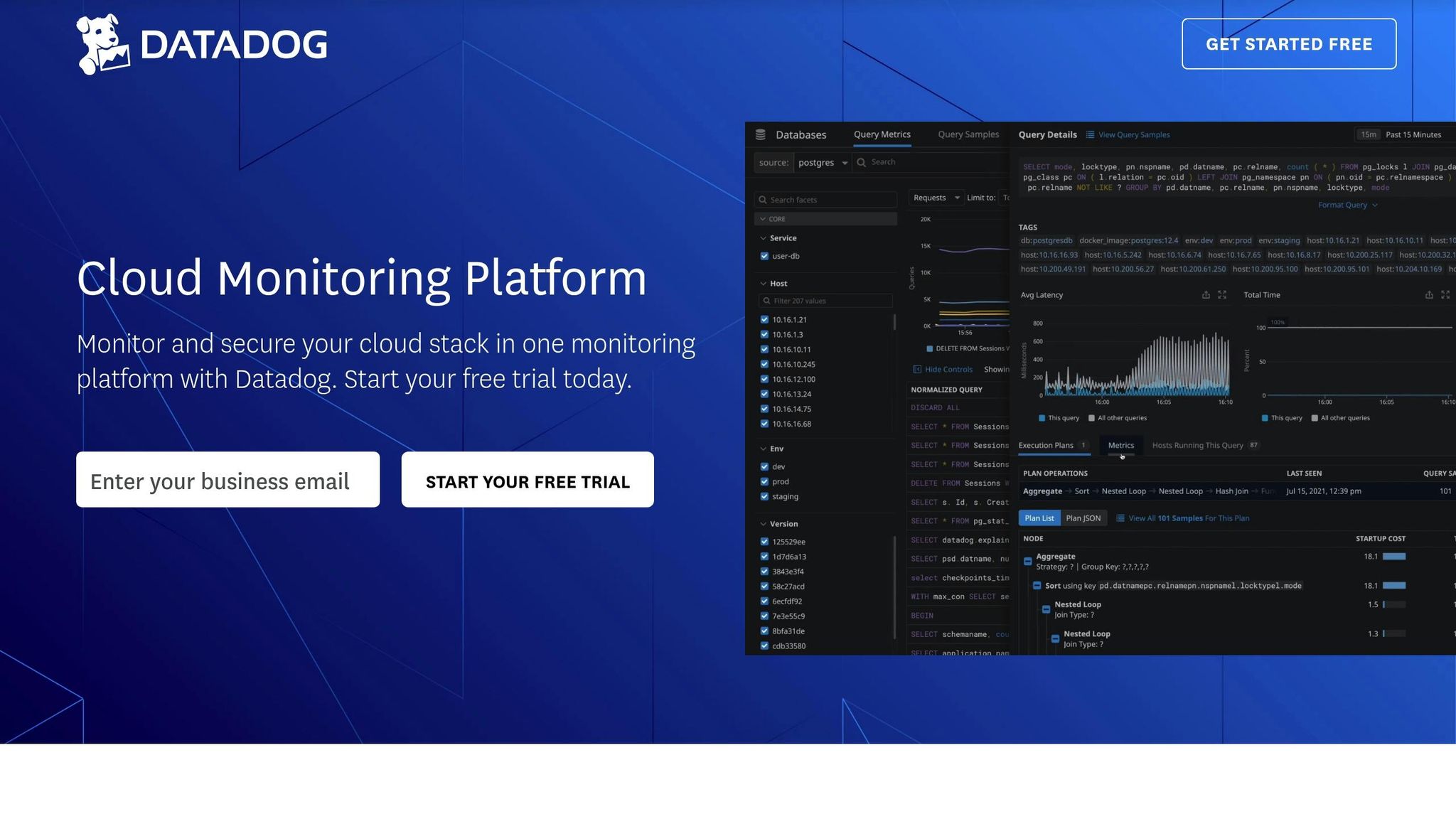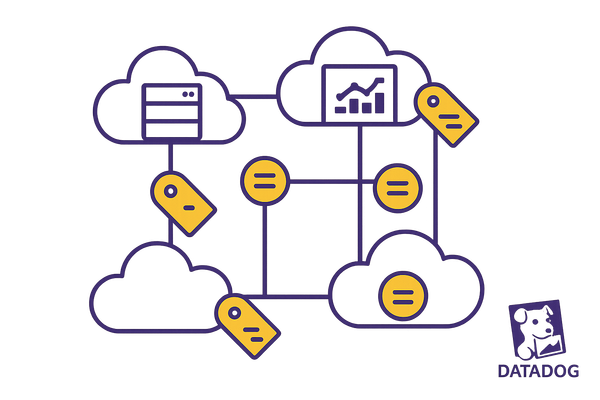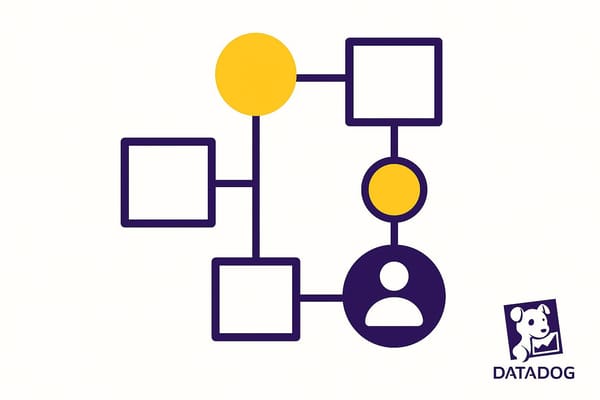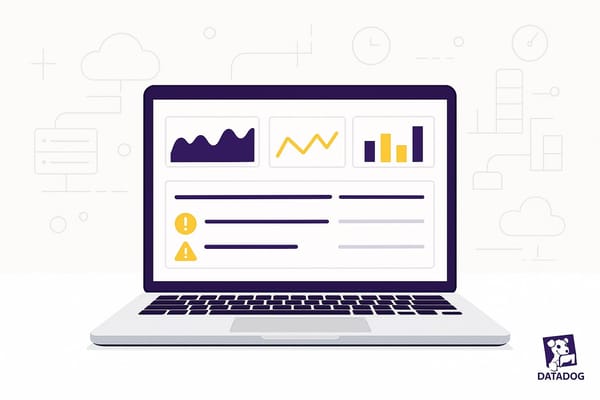How to Set Up SLO Alerts in Datadog
Learn how to effectively set up SLO alerts in Datadog to monitor service performance and maintain service quality without overwhelming your team.

Service Level Objective (SLO) alerts in Datadog help monitor your service's performance and reliability against specific error budgets and burn rates. These alerts notify you when your service risks exceeding its error thresholds, ensuring you catch issues early and maintain service quality. Here's a quick overview:
- Key Metrics: Track availability, latency, and error rates for critical user journeys.
- Error Budget Alerts: Notify you when error budget usage exceeds thresholds.
- Burn Rate Alerts: Detect rapid or sustained error budget consumption trends.
- Automation: Use Datadog's tools to automate monitoring and notifications.
- Configuration Tips:
- Validation: Test alerts in staging environments before production.
- Integration: Add SLO dashboards for real-time tracking and use Terraform for streamlined configurations.
SLO alerts are especially useful for small teams aiming to deliver reliable services without overloading resources. Start small, automate where possible, and regularly review your configurations to stay on top of service health.
Datadog Service Level Objective (SLO)

Creating SLOs in Datadog
Setting up SLOs (Service Level Objectives) in Datadog involves thoughtful planning to ensure your services are monitored effectively. By carefully selecting metrics and defining parameters, you can align performance monitoring with business goals.
Selecting SLO Metrics
Start by identifying the key user journeys that matter most to your business. Once identified, choose metrics that best reflect the performance of these journeys. Typically, SLO metrics fall into three main categories:
| Metric Type | Description | Common Use Cases |
|---|---|---|
| Availability | Measures system uptime and successful request rates | API endpoints, web services |
| Latency | Tracks how quickly responses are delivered | Page load times, API response times |
| Error Rate | Monitors the percentage of failed requests | Transaction failures, system errors |
Each metric type offers unique insights, helping you pinpoint areas for improvement and maintain reliable service delivery.
Setting Up SLO Parameters
When defining SLO parameters, keep these steps in mind:
- Define Time Windows: Choose an evaluation period that aligns with your service patterns, such as 7 or 30 days.
- Set Target Thresholds: Establish achievable success rates based on your service's criticality. For example, a 99.9% target might be suitable for key systems, while less critical services may allow for lower thresholds.
- Configure Error Budgets: Determine acceptable error margins by calculating how much failure your service can tolerate without impacting user experience.
It's essential to strike a balance between ambitious goals and realistic expectations. For instance, aiming for a 99.999% uptime may sound ideal but could be unnecessarily strict for many small to medium-sized businesses, as it translates to just 5 minutes of downtime per year.
Tips for Small Teams
If you're part of a small team, managing SLOs can be challenging. Here are some practical tips to simplify the process:
- Start Small: Focus on 2–3 critical SLOs that directly impact your core business operations. This keeps things manageable while addressing the most important areas.
- Automate: Leverage Datadog's automation features to minimize manual work. For example, set up automated error budget calculations and burn rate alerts to stay on top of performance issues without extra effort.
- Regular Review Cycles: Schedule monthly reviews to evaluate how your SLOs are performing. This allows you to adjust thresholds and targets based on real-world data and your team's capacity.
Setting Up Alert Rules
To keep your services running smoothly and avoid overwhelming your team, it's essential to set up error budget and burn rate alerts while routing notifications effectively.
Error Budget Alert Setup
Error budget alerts help you monitor how much of your error budget remains. Here's how to configure the key components:
| Alert Component | Configuration | Purpose |
|---|---|---|
| Threshold | 5% remaining budget | Sends a notification before the error budget is completely used up. |
| Time Window | 30-day rolling | Tracks error budget usage over a consistent period. |
| Target SLO | Below 100% | Ensures proper calculation of the remaining error budget. |
To set this up, access the SLO status page, click on "New SLO Alert", and choose "Error Budget Remaining." Set the threshold at 5% over a 30-day rolling window for accurate tracking and timely notifications.
Burn Rate Alert Configuration
A dual-alert strategy works best for monitoring burn rates. Here's how to set it up:
-
Fast-burn Alert
Detects sudden, sharp increases in error budget consumption:- Long window: 1 hour
- Short window: 5 minutes
- Threshold: 14.4x the baseline consumption
-
Slow-burn Alert
Identifies gradual, sustained increases in burn rate:- Long window: 6 hours
- Short window: 30 minutes
- Threshold: 6x the baseline consumption
This approach ensures you catch both rapid and slower trends in budget usage.
Alert Notification Setup
Once your alert thresholds are in place, it's time to configure notifications for seamless communication. For Slack notifications, use conditional message templates to tailor messages based on alert severity. Here's an example:
{{#is_warning}}WARNING: Error budget at 50% consumption
@slack-web-sre-notify{{/is_warning}}
{{#is_alert}}CRITICAL: Error budget at 90% consumption
@slack-web-sre-alerts{{/is_alert}}
Additionally, you can use PagerDuty tags (e.g., @pagerduty-serviceName) to route alerts to the right teams. This ensures that the right people are notified promptly and can take action.
Verifying Alert Function
Before deploying SLO alerts in production, it's crucial to validate their behavior to ensure your monitoring system works as expected.
Alert Testing Steps
Begin by setting up a test environment to check your alert configurations. Here's a structured approach:
| Testing Phase | Configuration | Purpose |
|---|---|---|
| Unit Testing | 5-minute window, 1-minute evaluation | Verify the logic behind alert triggers. |
| Integration | 30-minute window, 5-minute evaluation | Ensure notifications are routed correctly. |
| Production | Standard windows (1-hour/5-minute) | Perform a final check under real conditions. |
Leverage Datadog's "Test Notifications" feature to confirm alerts are being delivered to the right channels. It's also a good idea to schedule periodic test alerts to ensure your on-call teams are receiving notifications as intended.
Dashboard Integration
Once you're confident in your alert configurations, integrate them into your monitoring dashboards to enable real-time tracking:
-
Error Budget Status
Add a gauge widget to display the remaining error budget, both as a percentage and in time-based terms. Use the following JSON configuration for setup:{ "type": "slo", "refresh": "1m", "viz_type": "gauge", "slo_id": "your-slo-id" } -
Burn Rate Monitoring
Incorporate a burn rate timeline widget to compare actual usage against defined thresholds. This gives you early warning signs of potential issues before they escalate.
Common Alert Issues
After integrating alerts into your dashboard, keep an eye on common problems that might arise. Here are a few to watch for:
-
Threshold Miscalculations
If you're working with a 99.9% SLO target, make sure your error budget calculations are accurate. Use Datadog's formula:(1 - 0.999) * time_window. If alerts are firing incorrectly, review your burn rate thresholds against historical trends using the SLO History API. -
Notification Delays
Set up a latency tracking widget with anomaly detection to catch delays longer than 5 minutes. For critical services, enable Datadog's Event Pipeline monitoring and tag it withservice:alert-deliveryto keep tabs on alert delivery performance. -
Maintenance Windows
Avoid false positives by defining maintenance windows in your monitoring setup.
For multi-service SLOs, make use of tag management and grouping to ensure alerts are accurately targeted. This helps streamline monitoring across complex environments.
Advanced Alert Management
Terraform offers a streamlined way to manage SLO alerts, combining the benefits of version control, team collaboration, and automated deployments.
Terraform Integration

To get started, configure the Datadog provider in Terraform and define your SLO along with its alert thresholds in a configuration file. Here's an example of setting up an SLO to monitor API availability:
resource "datadog_slo" "api_availability" {
name = "API Availability"
type = "monitor"
description = "SLO tracking API availability"
monitor {
monitor_id = datadog_monitor.api_status.id
}
thresholds {
timeframe = "30d"
target = 99.9
warning = 99.95
}
tags = ["env:production", "service:api"]
}
You can also define alert rules to keep an eye on error budget consumption. For instance:
resource "datadog_monitor" "slo_burn_rate" {
name = "SLO Burn Rate Alert"
type = "slo burn rate"
message = "Error budget consumption rate exceeding threshold"
query = "burn_rate(\"${datadog_slo.api_availability.id}\", ${var.burn_rate_threshold})"
}
Once your SLO and alert rules are in place, it's a good idea to schedule maintenance windows to avoid unnecessary alerts during planned downtimes.
Maintenance Windows
Using Terraform, you can schedule maintenance periods to suppress alerts temporarily. Here's an example configuration:
resource "datadog_downtime" "maintenance" {
scope = ["*"]
start = 1714521600 # May 1, 2024, 2:00 AM UTC
end = 1714525200 # May 1, 2024, 3:00 AM UTC
timezone = "America/New_York"
message = "Scheduled maintenance window"
recurrence {
type = "weeks"
period = 2
}
}
When setting up maintenance windows, pay attention to these key parameters:
| Parameter | Description | Example Value |
|---|---|---|
| Duration | Length of the maintenance period | 60 minutes |
| Frequency | How often the window repeats | Bi-weekly |
| Scope | Services affected (via tags or scopes) | service:payment-api |
| Notice | Advance warning time before downtime | 48 hours |
This approach ensures your alerts remain meaningful and reduces noise during planned activities.
Summary
Setting up effective SLO alerts in Datadog requires careful planning and execution to keep service performance in check. Below is a quick breakdown of the key phases and their focal points:
| Phase | Key Actions | Key Considerations |
|---|---|---|
| Initial Setup | Define SLO metrics and targets | Align metrics with overall business goals |
| Alert Configuration | Set error budget and burn rate thresholds | Avoid over-alerting while staying proactive |
| Integration | Configure notification channels and dashboards | Make sure these are accessible to the team |
| Maintenance | Schedule downtime windows and review periods | Account for planned maintenance activities |
For small and medium-sized businesses (SMBs) managing service reliability, SLO alerts offer several practical advantages:
- Prevent Incidents: Keep an eye on error budgets to identify and address issues before they reach customers.
- Prioritize Resources: Allocate engineering time to the areas that need it most.
- Improve Communication: Provide stakeholders with measurable and transparent reliability metrics.
Automated tools like Terraform can make a big difference in managing SLO configurations. By using Terraform for infrastructure as code, you can simplify deployment and maintenance, which is especially helpful for smaller teams looking to scale their monitoring efforts without sacrificing consistency.
When starting out, aim for conservative and realistic SLO thresholds. Use performance data over time to tweak and refine these thresholds. Regularly reviewing your SLO configurations will help maintain operational efficiency while keeping on-call responsibilities manageable.
FAQs
What are the advantages of using dual-alert strategies for burn rates in Datadog, and how do they improve service reliability?
Using Dual-Alert Strategies for Burn Rates in Datadog
Setting up dual-alert strategies for burn rates in Datadog is a smart way to stay ahead of potential service issues. By configuring two types of alerts - one for early warnings and another for critical thresholds - you can keep a closer eye on your service health and act before small problems turn into major incidents.
The early warning alert acts as a gentle nudge, signaling when burn rates begin to climb. This gives your team the chance to investigate and address possible concerns early. The critical alert, however, is designed to grab immediate attention, ensuring swift action if the situation grows more serious. This two-layered system not only helps reduce downtime but also keeps your services running smoothly, ensuring a reliable experience for your users.
How can small teams set up and manage SLO alerts in Datadog without overloading their resources?
To set up and manage SLO alerts in Datadog effectively, small teams can follow these steps:
- Define Your SLOs: Start by identifying the most important KPIs for your service, like availability or latency. These metrics should align with what matters most to your users and business goals.
- Create an SLO in Datadog: Use Datadog’s SLO feature to set your targets, thresholds, and timeframes. This step ensures you have a clear benchmark for measuring your service's performance.
- Set Up Alerts: Configure alerts to notify your team when an SLO is close to being breached or has already crossed its threshold. Datadog’s alerting tools allow you to tailor notifications so the right people are informed at the right time.
- Automate Notifications: Take advantage of Datadog’s integrations with tools like Slack or PagerDuty to automate notifications. This streamlines communication and ensures your team can act quickly when issues arise.
By focusing on well-defined objectives and using Datadog's automation features, small teams can keep a close eye on service performance without overloading their resources. This approach not only helps catch potential problems early but also supports smoother day-to-day operations.
How can I test and verify SLO alert configurations before using them in production?
To make sure your SLO alerts are set up correctly before rolling them out in a live environment, take these steps:
- Simulate Alerts in a Test Environment: Run simulations in a controlled setting to see if the alerts trigger as expected. This prevents any impact on your live systems while verifying their functionality.
- Double-Check Your Thresholds: Go over the thresholds and conditions you've set. Make sure they align with your SLOs and meet your business goals.
- Get Team Feedback: Share your configuration with teams like DevOps or SREs. Their input can help catch potential issues and ensure everything is aligned.
By thoroughly testing your SLO alerts, you’ll ensure they deliver reliable, actionable insights while keeping unnecessary disruptions to a minimum.




